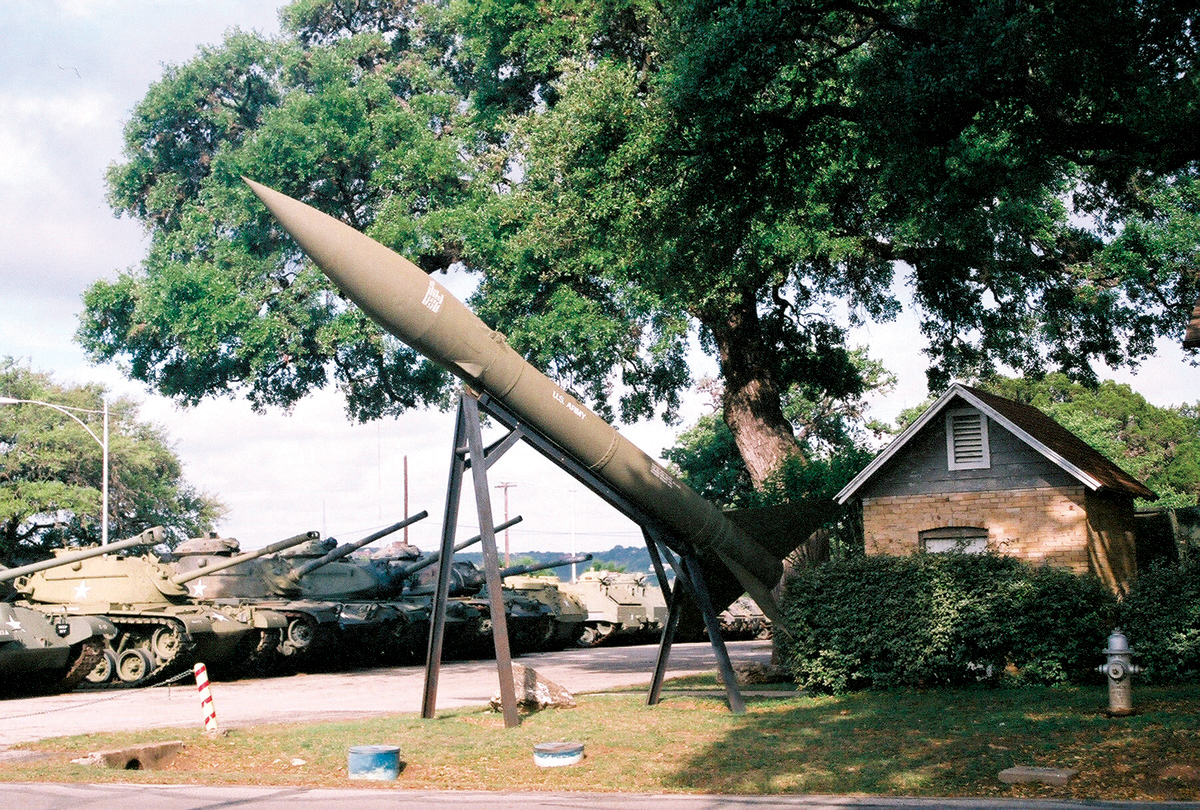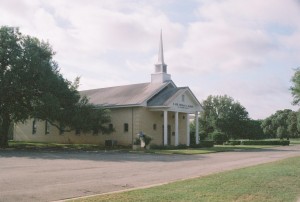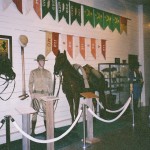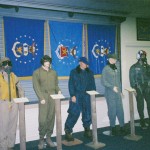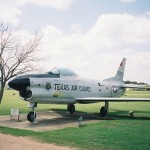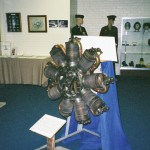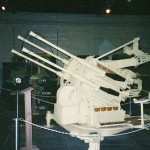By James G. Stanley,
The Texas Military Forces Museum, located at Camp Mabry, almost in the center of Austin, is dedicated to the men and women who served in the military forces of Texas.
“The museum’s mission is to preserve the legacy of those individuals and educate the public by means of exhibits and written histories of all major Texas National Guard units,” said Pat Simpson, acting director.
Simpson said that with exhibits ranging from the Texas Revolution to Desert Storm and to the present, the museum is important in informing citizens about the values and events that have shaped the modern world.
“The museum is probably unique in its total coverage of all military organizations in a single state,” he said.
Camp Mabry was developed in 1892 as a training post for the Texas Volunteer Guard, which was composed of the Texas National Guard and the Texas Defense Guard. It was named for General Woodford H. Mabry, adjutant general of Texas, who had led the move to secure land for the post on the Colorado River, about three miles northwest of the Austin Capitol building.
When World War I began, the Texas National Guard joined the Oklahoma National Guard to form the 36th Infantry Division. The division was mobilized for the war and Camp Mabry was designated a school for automotive mechanics.
The 36th Division, with its various units, was again mobilized for World War II, while Camp Mabry remained the headquarters for the Texas Defense Guard, the only remaining state militia in the nation. This entity may only be called to active duty in conflicts and disasters within Texas.
The 36th Division distinguished itself during the war in action, from the landings in Italy at Salerno, battles at the Rapido River, and the Rome-Arno push to the assault landings in southern France and drive into Central Europe.
In 1986, a project to develop a museum at Camp Mabry began. With the backing and assistance of the U.S. Army, Texas Guard personnel, and scores of retired military and civilian volunteers, work began in 1990. Building 6, a mess hall built in 1918, with a bakery and kitchen, was converted into two major exhibition galleries and a workshop.
The museum was incorporated with a state charter; the formal opening was held Nov. 14, 1992. Upon the recent retirement of the original organizer and long-term director, Brig. General John C.L. Scribner, the museum board included his rank and name in the official title of the facility. Scribner passed away on May 4, 2006, after a lengthy bout with colon cancer.
Simpson explains that the story line through the Main Gallery follows the Texas War for Independence from Mexico through all major conflicts to the Gulf War, the Bosnia occupation, Afghanistan and Iraq.
“These exhibits are histories of the Texas Air National Guard, 36th Infantry Division and the ‘Lost Battalion’ of the China-Burma-India Theater in World War II,” he said.
The Texas Air National Guard exhibit includes an early Gnome rotary aircraft engine and a small jet engine from the 1950s. There’s also a frame of photographs and document copies depicting the National Guard service of President George W. Bush.
Donations over the years of some 200 airplane models prompted the museum to build a History of Flight exhibit of these models in two large glass cases. On one side, the history of American aviation contains models from the Wright brothers to the F-22 Raptor in various attitudes from parked on the surface to hanging at different elevations. The other side displays seaplane models, primarily the great clipper ships from the 1930s, and bombers from the 1920s through WWII types to the modern B-52 and supersonic Lockheed SR-71 Blackbird.
In the museum building adjacent to the Main Gallery, the Great Hall exhibits aircraft and military vehicles such as light observation and artillery-spotting planes, staff cars and anti-aircraft guns.
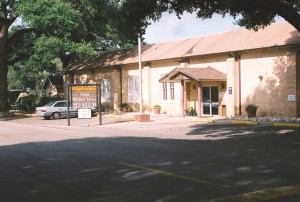
The museum entrance sign displays the name of the long-time director, the late retired Brig. Gen. C.L. Scribner.
Armor Row displays historic armored vehicles, including tanks named for famous generals, on the south side of the museum. Artillery Park exhibits major artillery pieces behind the museum to the west. Aircraft, helicopters and artillery are displayed around the base parade ground parallel to Texas Loop 1, MOPAC Boulevard.
Volunteer coordinator Ted Aanenson explained that aircraft in the outside display include the Bell AH-1 Cobra, the first specially designed attack helicopter, initially used in Vietnam in 1967. Racks attached to the short wings under the rotor shaft accept a variety of armaments such as smoke dispersers and anti-personnel missiles for support of ground troops. The Hughes AH-64 Apache replaced the Cobra in the National Guard in the mid 1990s.
Next in line is the Bell UH-1 Huey utility helicopter, which began service in 1959. It proved to be a highly adaptable aircraft. The “Mike” model, also on display, was designed as a gunship to provide fire support to troops on the ground in Vietnam. Including all models and modifications, more than 8,000 Huey helicopters were built.
The AH-1 Cobra replaced the Mike in the early 1970s, and the Sikorsky UH-60 Blackhawk replaced the basic Huey in regular Army and National Guard units.
Also visible to the highway are two jet fighters, the McDonnell Douglas F-4 Phantom II, used through the first Gulf War, and the North American F-86 Sabre, the first-line interceptor in Korea.
Several nations around the world flew the Phantom II, judged by many as the best fighter ever made. It was versatile, and while weighing more than 60,000 pounds, was still used off aircraft carriers. With a crew of two—pilot and electronics officer—the F-4 cruised at a little more than 1,400 miles per hour. More than 6,000 were produced and it was retired from U.S. service after the first Gulf War.
The F-86 first entered service in 1949. More than 9,000 were built. At top speed over 680 miles per hour, the Sabre was the primary interceptor for the U.S. Air Force from Korea to the mid-1960s. The new supersonic jets, the F-104 and F-106, replaced the Sabre at that time.
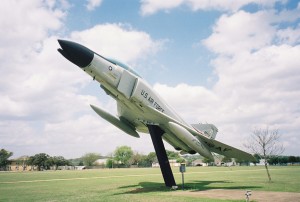
The McDonnell Douglas F-4 Phantom II, a 30-ton, supersonic fighter, was used off carrier and land bases throughout the early 1990s.
Outside exhibits include various personnel carriers, anti-aircraft guns and howitzers, both self-propelled and trailer-mounted. There are a number of captured enemy vehicles and guns from WWII.
The museum is open Wednesday through Sunday, 10 a.m. to 4 p.m. Admission is free, with various classes of membership available. There are now more than 500 lifetime members.
Guided visitor and school tours are offered. There’s a small gift shop, and the archives and library of more than 8,000 volumes is open to the public.
The average attendance at the museum has grown from 4,000 in 1994 to more than 15,000 per year. In addition, members of the staff provide talks on Texas military history to school groups and civic organizations statewide.
For more information, call 512-782-5659, or visit [http://www.texasmilitaryforcesmuseum.org/index.html].
- The 112th Cavalry Regiment was formed in 1921 as part of the Texas National Guard.
- Uniforms of the Texas Air National Guard are displayed in the Main Gallery.
- The North American F-86 Sabre was the primary first-line interceptor in the Korean conflict.
- An early Gnome rotary engine, circa WWI, is on display in the Main Gallery.
- A naval 20mm anti-aircraft battery is shown in the Great Hall among a variety of weapons and vehicles.











